As soon as iFixit launched last June, it put its hands on the 15-inch MacBook Pro with Retina display and disassembled both the machine and the display, showing how complex it was. How about now take a look at the newest brother (model A1425), launched at the Apple special event that took place on Tuesday (10/23)?

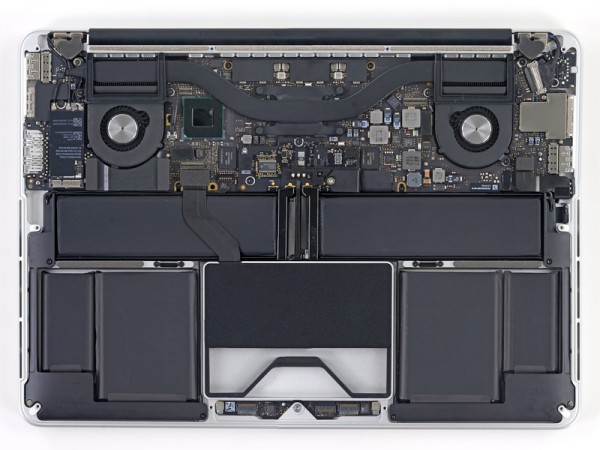
The iFixit experts immediately noticed that there were changes in the battery design between the launch of the two models (15 ″ and 13 ″). As we can see (click here and compare), the new machine does not have battery cells in the space provided for the trackpad, which should facilitate the exchange of the part in case it breaks.

The warning for only one Apple specialist to open and tamper with the machine remains there.
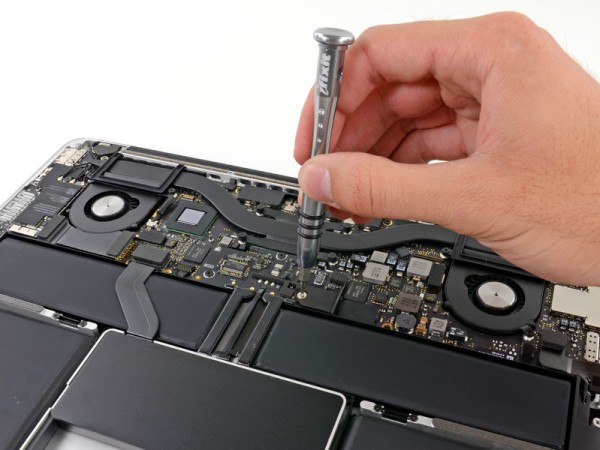
The battery is fixed by several screws, which need to be loosened to have access to the bowels of the machine.

The machine's SSDs (256GB) were produced by Samsung and carry the serial number S0X5NYAC703706.
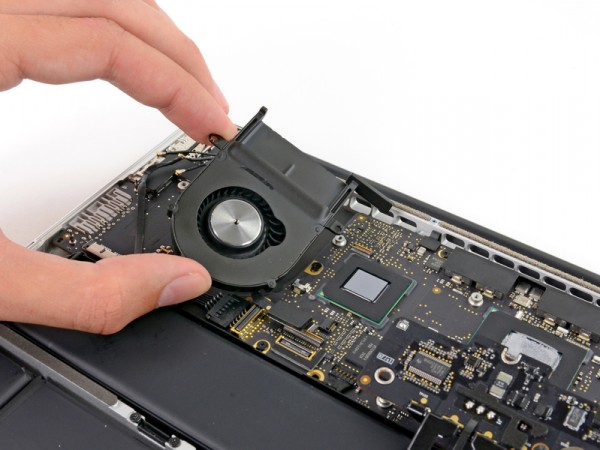
The protection against heating and the asymmetric fan introduced in the larger model are there with sizes adjusted to the model of 13 ″, of course.
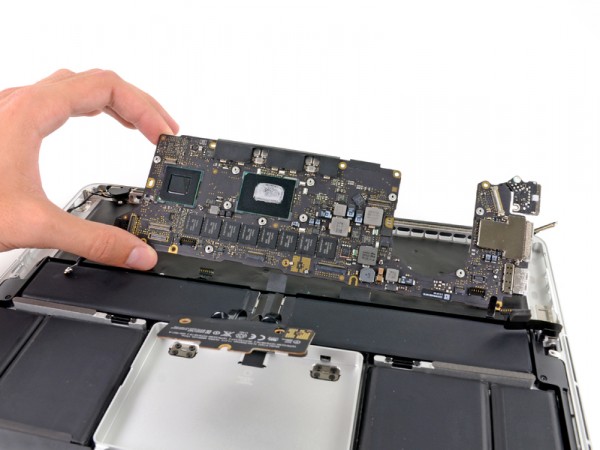
Below, details of the logic board:
- 2.5GHz Intel Core i5-3210M processor (with Intel HD 4000 graphics and 3.1GHz Turbo Boost graphics).
- Hynix H5TC4G83MFR DDR3L SDRAM (8GB), soldered on the logic board.
- Intel BD82QS77 platform control hub.
- Intel DSL3510L Thunderbolt Controller.
- Texas Instruments Stellaris LM4FS1AH Microcontroller.
- SMSC USB2512B USB 2.0 control hub.
- Cypress Semiconductor CY8C24794-24L.
- Maxim MAX15119 power controller.
- Audio controller from Cirrus Audio 4206BCNZ.
- Texas Instruments TPS 51980 chip.
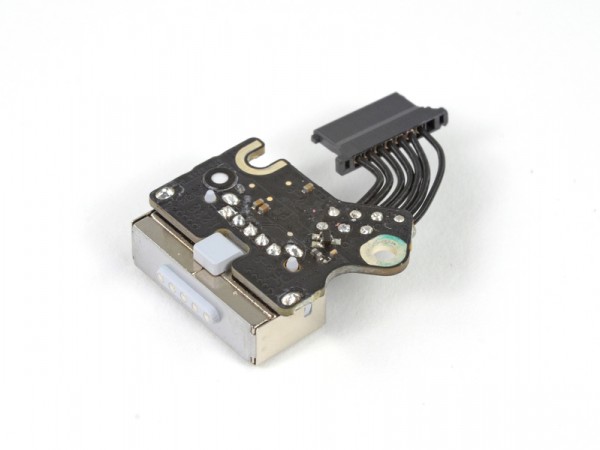
The MagSafe 2 connector, highlighted.

The battery of the 13-inch MacBook Pro with Retina display brought advances in terms of repairability. Unlike the 15 ″ model that won the EPEAT “Gold” rating, which iFixit does not agree with in any way the battery of the new model uses less adhesives and more screws / metal plates to be fixed. With that, iFixit needed less time to remove it, without the need for a heat machine.
The 13 ″ (MacBook Pro's) battery retina a step in the right direction for recycling and repairability, but still a long way from the non-adhesive batteries in the old MacBook Pro.
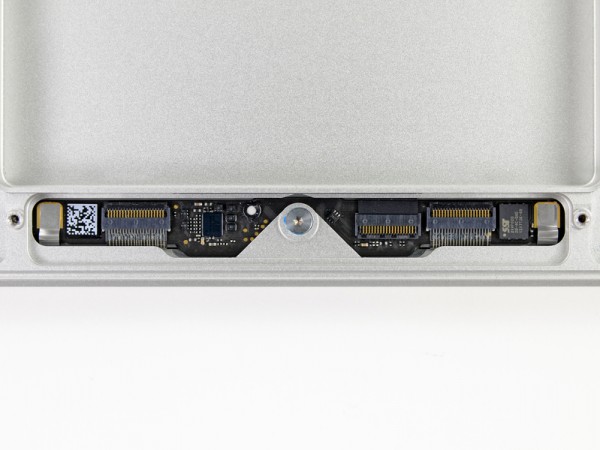
The trackpad brought a surprise: in addition to the Broadcom BCM5976 touchscreen control, the same one used in the iPhone 5, it has a 2Mb flash storage (Silicon Storage Technology SST25VF020). For what? IFixit doesn't know, but it just noticed now. However, he warned that the 15 ″ model also has the same storage, even though they did not realize it during the disassembly of the larger machine.
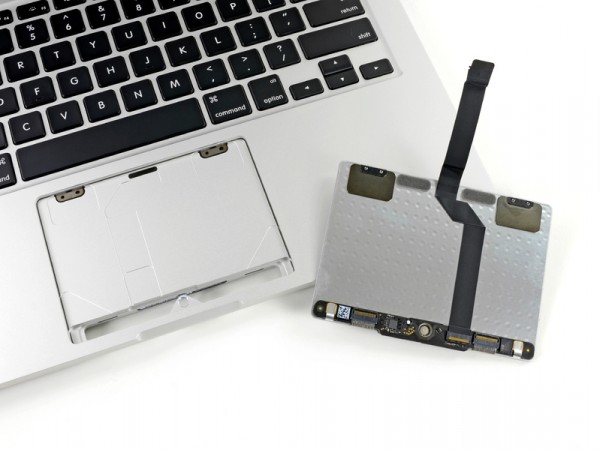
As stated above, the MBP Retina 13 ″ trackpad can be easily replaced by simply removing five screws very different from the MBP Retina 15 ″, in which the trackpad is hidden behind the battery.
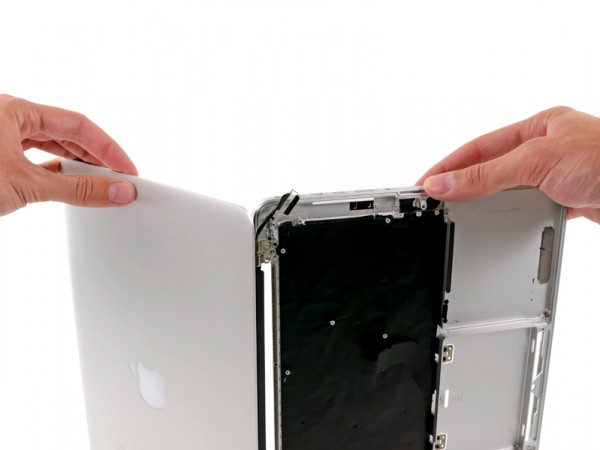
The Retina diplay fixed by some Torx screws. IFixit preferred not to try to separate the screen from the glass as they are now laminated together.
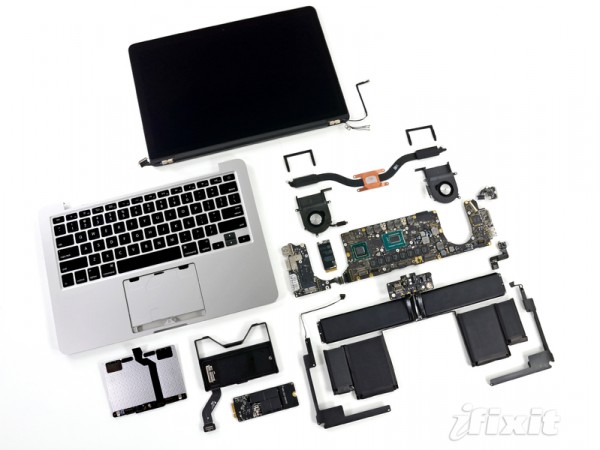
Result: the 13-inch MacBook Pro with Retina display earned a 2/10 score on repairable glued battery, proprietary pentalobe screws, soldered RAM logic board, screen set almost impossible to dismantle, among other points that help achieve that low score.
For more information and details, be sure to read their article. Oh, and if you like pictures of kittens, the disassembly is full of them, with the right wallpaper resolution compatible with the new machine (2560 × 1600 pixels quality). Want an example? See the image below:

Click to enlarge.
We recently contacted them to find out how they were able to reassemble disassembled machines. They replied that, yes, most of the time they succeed, but that it depends a lot on the device and what is analyzed.
In some cases they remove the top layer of the CPU, as they did on the Kindle Fire HD. In such cases there is no way, the device is lost. But they even reuse broken gadgets in many different ways, so the device doesn’t become a big paperweight.
